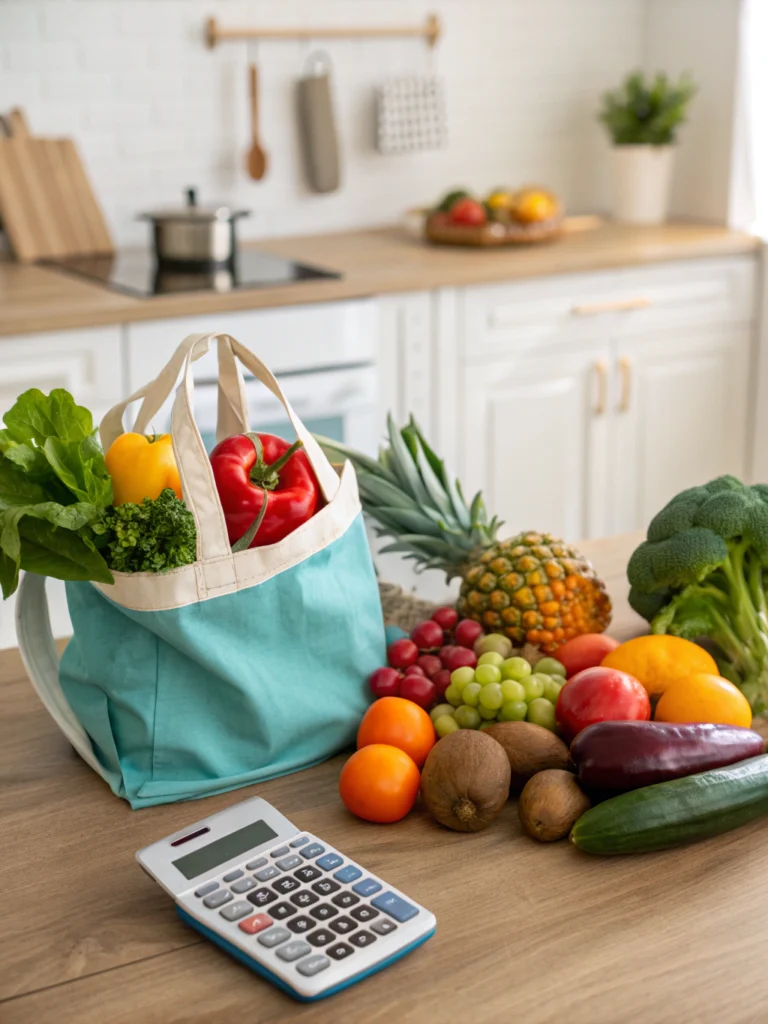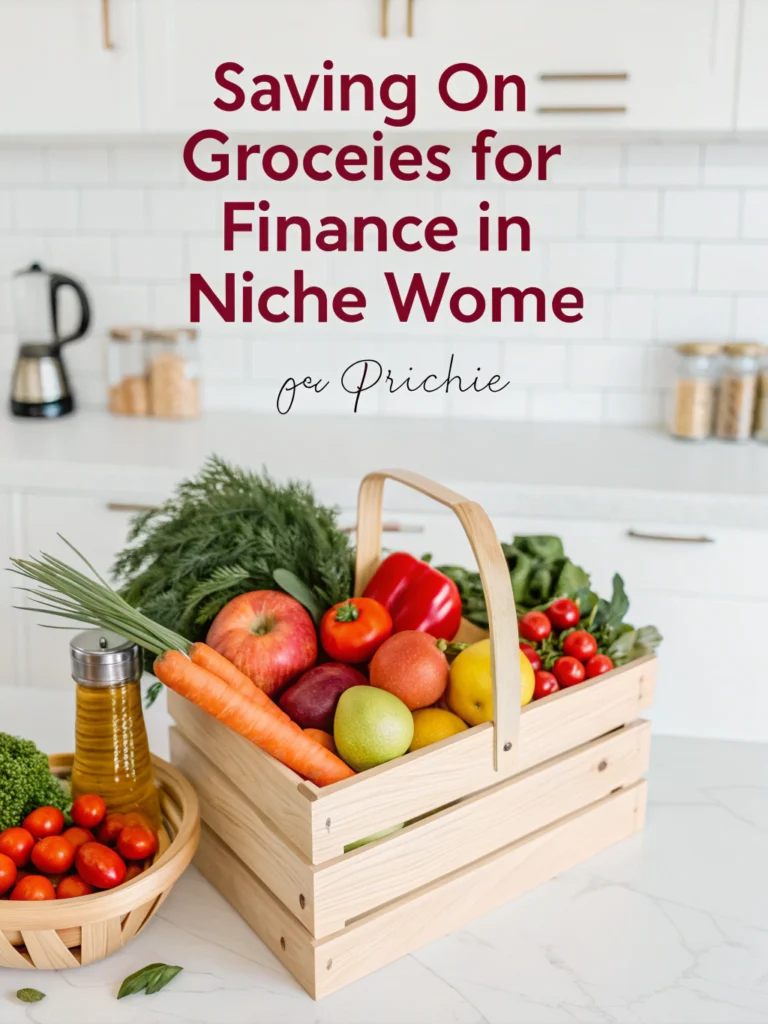Ever feel like your grocery bill just keeps climbing while your cart stays the same size? Yeah, me too. It’s like food prices have a personal vendetta against our wallets. But here’s the thing—you don’t have to give up your favorite snacks or live off ramen to keep more cash in your pocket. Learning smart ways to save money on groceries can literally transform your budget without making you feel deprived.
In this post, I’m breaking down 11 ways to save money on groceries that actually work in 2026. These aren’t your grandma’s couponing tips. These are modern, practical hacks that fit real life—whether you’re feeding a family of five or just trying to adult without going broke.
Table of Contents
No time to read the whole post?
Here’s the quick version: You can slash your grocery bill by meal planning, using cashback apps, buying store brands, shopping seasonally, avoiding impulse buys, joining loyalty programs, buying in bulk smartly, using coupons strategically, shopping at discount stores, comparing unit prices, and reducing food waste. Each tip is simple to implement and can save money without sacrificing quality or taste.
11 ways to save money on groceries
1. Plan Your Meals Like a Boss
Look, I get it. Meal planning sounds about as fun as doing taxes. But hear me out—this one trick alone can cut your grocery spending by 20-30%. When you walk into a store without a plan, you’re basically asking your wallet to cry.
Start by checking what you already have at home. Then build your weekly menu around those ingredients. Write down exactly what you need for each meal and stick to that list like your budget depends on it (because it does). This eliminates those “oh, this looks good” moments that add $50 to your cart.
Bonus: Planning meals reduces food waste because you’re only buying what you’ll actually use. It’s a win-win that takes maybe 20 minutes on Sunday but saves you hundreds over the year.
2. Embrace Store Brands Without Shame
Real talk: Most store-brand products come from the same factories as name brands. You’re literally paying extra for prettier packaging and advertising costs. In 2026, generic brands have seriously upped their game—many taste identical or even better than the fancy stuff.
I started switching to store brands for basics like pasta, canned goods, flour, and frozen veggies. My taste buds didn’t notice, but my bank account definitely did. You can save 25-40% on average just by grabbing the store label instead of the brand you saw on a commercial.
Try it with a few items first. If you genuinely hate something, fine—go back to the name brand for that one thing. But chances are, you’ll wonder why you ever paid double.
3. Download ALL Cashback Apps
Okay, maybe not every single one, but definitely the big players: Ibotta, Fetch Rewards, Rakuten, and your store’s specific app. These apps literally give you money back for buying stuff you were already planning to buy. It’s free money just sitting there waiting for you to claim it.
Here’s my routine: Before shopping, I check what’s on offer in these apps. Then I plan my meals around those deals when it makes sense. After shopping, I scan my receipt and watch the cash pile up. Some weeks I get $5 back, other weeks $20+. Over a year? That’s easily $300-500 back in your pocket.
The setup takes maybe an hour total, but then it becomes second nature. Future you will thank present you, trust me.
4. Buy Seasonal Produce (Your Wallet Will Love You)
Strawberries in December? Sure, if you want to pay $8 for a tiny container. Buying produce when it’s in season means it’s abundant, fresher, and way cheaper. In summer, berries and tomatoes are dirt cheap. In fall, squash and apples won’t break the bank.
I’ve started planning my meals around what’s currently growing. Not only do I save money, but the food actually tastes better because it didn’t travel 3,000 miles to reach me. Revolutionary, right?
Check out your local farmer’s market too. Toward closing time, vendors often slash prices because they don’t want to haul stuff back. I’ve scored amazing deals just by showing up an hour before they close.
5. Master the Art of Saying No to Impulse Buys
Those end-cap displays? The candy at checkout? The “limited time” chips in the middle of the aisle? Yeah, those are psychological warfare designed to make you spend more. Stores literally hire experts to make you buy stuff you didn’t know you needed (spoiler: you don’t).
One trick that works: Never shop hungry. Seriously. When your stomach is growling, everything looks amazing and necessary. Eat a snack before you go, and suddenly you have the willpower to walk past that artisan cheese that costs more than your phone bill.
Another hack: Use the 10-second rule. Before putting something not on your list into your cart, pause for 10 seconds and ask yourself if you really need it. Most of the time, the answer is no, and you’ll put it back.
6. Join Every Loyalty Program (It’s Actually Worth It)
I used to think loyalty programs were a scam to collect my data. And yeah, they totally are. But they also save you legit money, so I’ve made peace with it. Most grocery stores offer personalized discounts, bonus points, and exclusive member pricing.
The key is actually checking your rewards before shopping. Many programs load digital coupons straight to your account—you just need to “clip” them in the app. Takes 5 minutes and can save you $10-20 per trip.
Some stores even offer free items on your birthday or anniversary of joining. Free food for existing? I’ll take it.
7. Buy in Bulk (But Only for Stuff You Actually Use)
Costco and Sam’s Club can be amazing for your budget or a total trap—it depends on how smart you shop. Buying a 50-pound bag of rice when you eat rice weekly? Brilliant. Buying a gallon of ranch dressing when you use it once a month? Recipe for waste and regret.
Focus on non-perishables and things you use constantly: toilet paper, paper towels, pasta, canned goods, frozen items. These won’t go bad, and the per-unit cost is usually way lower than regular stores.
Pro tip: Split bulk purchases with a friend or family member. You both get the savings without needing a warehouse to store 100 rolls of paper towels.
8. Get Strategic With Coupons (Digital Is Where It’s At)
Clipping physical coupons is pretty much dead in 2026, and honestly, good riddance. Digital coupons are where it’s at now—they’re easier to find, automatically apply at checkout, and you don’t need a binder system to manage them.
Stack coupons with store sales for maximum impact. When something you regularly buy goes on sale AND you have a coupon? That’s the sweet spot. I’ve gotten items for 50-75% off just by timing it right.
Check your store’s app, manufacturer websites, and coupon aggregator sites. Set aside 10 minutes before your shopping trip to load up the relevant offers. It’s basically paying yourself $30-40 an hour for that time invested.
9. Shop at Discount Grocery Stores
Aldi, Lidl, Grocery Outlet, Save-A-Lot—these stores have figured out how to sell quality food for less by cutting out the frills. No fancy displays, smaller selection, more store brands. And you know what? That’s totally fine.
I do probably 70% of my shopping at discount stores now. The quality is perfectly good, and my grocery bill dropped by about 30% when I made the switch. For specialty items or specific brands I really want, I’ll hit a regular grocery store, but that’s the exception now.
The only “downside” is less variety, but honestly, having 47 types of peanut butter to choose from was overwhelming anyway. Sometimes less is more, especially when it means more money in your account.
10. Always Check the Unit Price (Math Saves Money)
Here’s a dirty little secret: The bigger package isn’t always cheaper per ounce. Sometimes stores bank on you assuming the family size is the better deal when it’s actually not. Sneaky, right?
Those little tags on the shelf edge show the unit price—usually price per ounce or per item. Comparing these takes 2 seconds and can reveal which size is actually the better value. I’ve found tons of cases where the medium size was cheaper per unit than the large.
This is especially true during sales. A “buy one get one” might seem amazing until you realize the regular price of the competitor’s product is still cheaper per unit. Do the quick math and make the smart choice.
11. Reduce Food Waste Like Your Budget Depends on It (Because It Does)
Americans waste about 30-40% of their food. That’s literally throwing money in the trash. Getting serious about using what you buy can save hundreds of dollars without changing what you purchase.
Store food properly so it lasts longer. Use your freezer more—bread, cheese, meat, even some veggies freeze great. Plan “leftover nights” where you eat up everything that’s about to go bad before buying more groceries.
Get creative with scraps. Vegetable ends make great stock. Overripe bananas become banana bread. Wilting greens go into smoothies. There’s almost always a way to use food before it hits the trash can.
Also, understand expiration dates. “Best by” doesn’t mean “poisonous after.” Use your senses—if it looks, smells, and tastes fine, it’s usually fine. Don’t toss food just because a date passed.
Wrapping It Up
Look, saving money on groceries isn’t about depriving yourself or eating boring food. It’s about being strategic, staying aware, and making smarter choices that add up over time. These 11 strategies aren’t complicated or time-consuming—they’re just about changing a few money habits and being more intentional.
Start with 2-3 of these money tips that feel doable for your lifestyle. Once those become routine, add another. Before you know it, you’ll be that person who casually mentions saving $200 a month on groceries while still eating well. 🙂
Your future self—and your bank account—will seriously thank you. Now get out there and show that grocery bill who’s boss!
What’s your favorite money-saving grocery hack? Drop it in the comments—we’re all in this together!






